PhysicsBowl 2017 Q38
- keshprad

- May 13, 2020
- 1 min read
38) In this question we have a bucket spinning vertically in centripetal motion. We know that at the top of the motion, the bucket moves just fast enough such that the 2kg block inside the bucket stays put. We need to find the normal force when the bucket makes a 30° angle with the vertical.
Let's draw a free-body diagram of the bucket when it is at the top of the path.
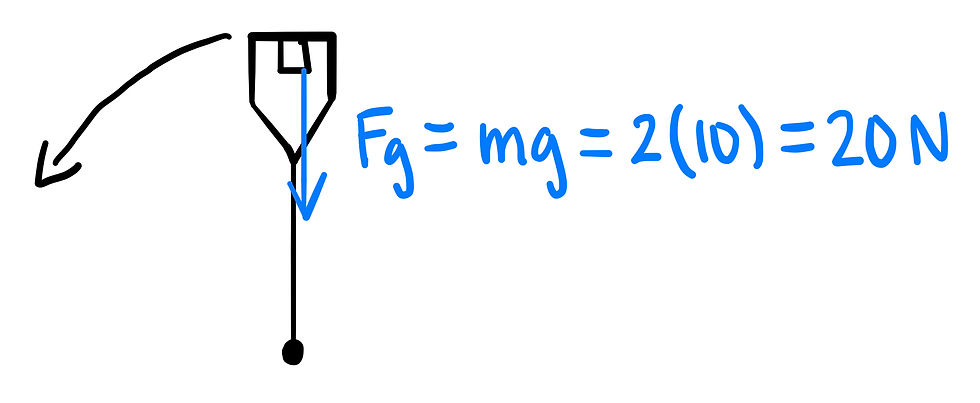
Since gravity is the only force, and the net force acting towards the center of the motion, we can equate this to our centripetal force to solve for the velocity at this point.

Next, we can set up an equation for the centripetal force when the bucket is at 30°. Let's start with the force diagram.
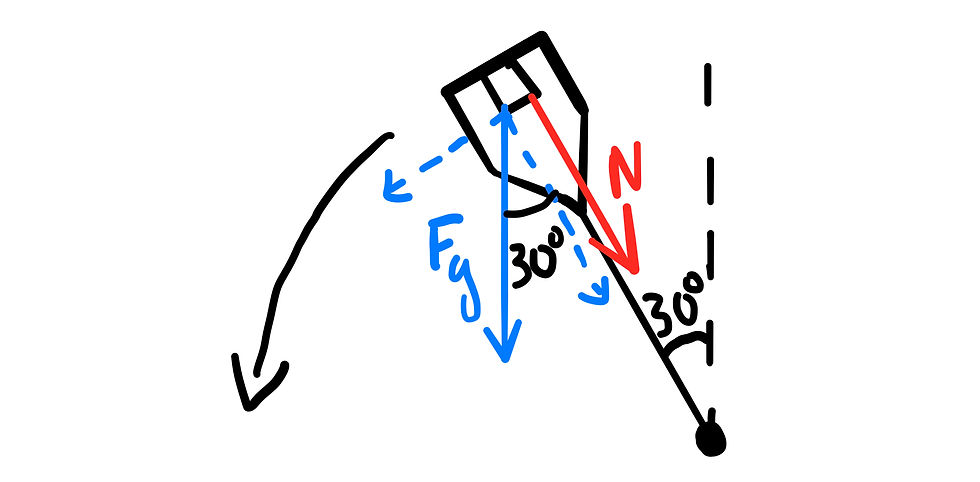
Remember that centripetal force describes the net force towards the center of the object's motion. This means only one component of gravity will be included.
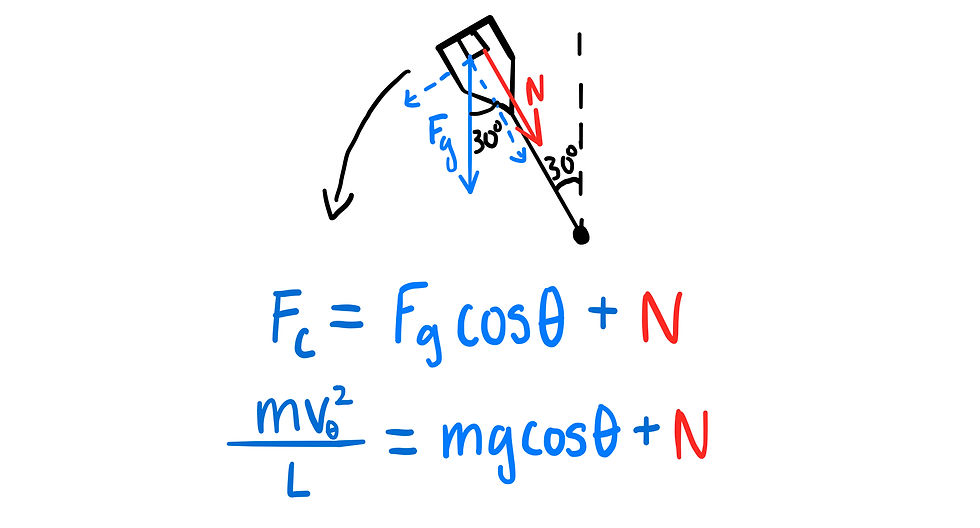
At this point, all we need to solve for v[θ], the speed of the block when the bucket makes a 30° angle with the vertical. We can use the conservation of energy to determine v[θ].

Now, we can go back to our centripetal force equation and solve for N.
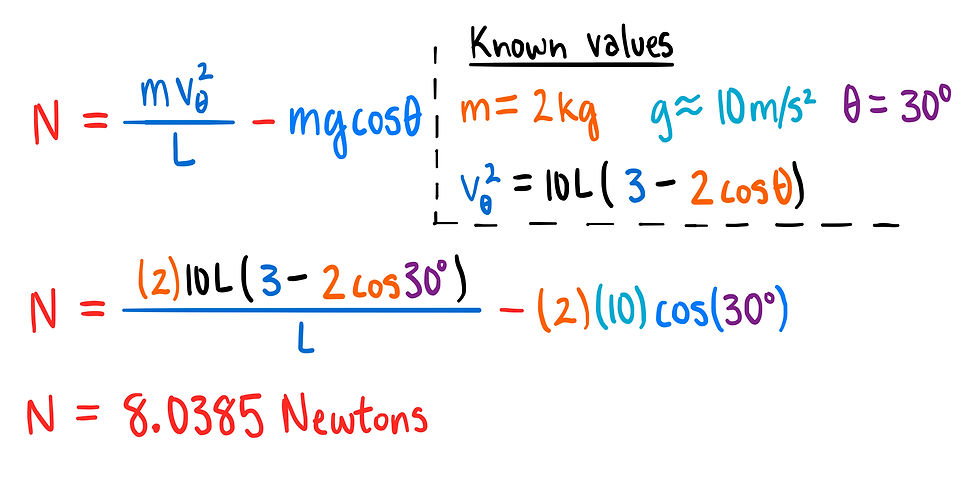
Answer: A


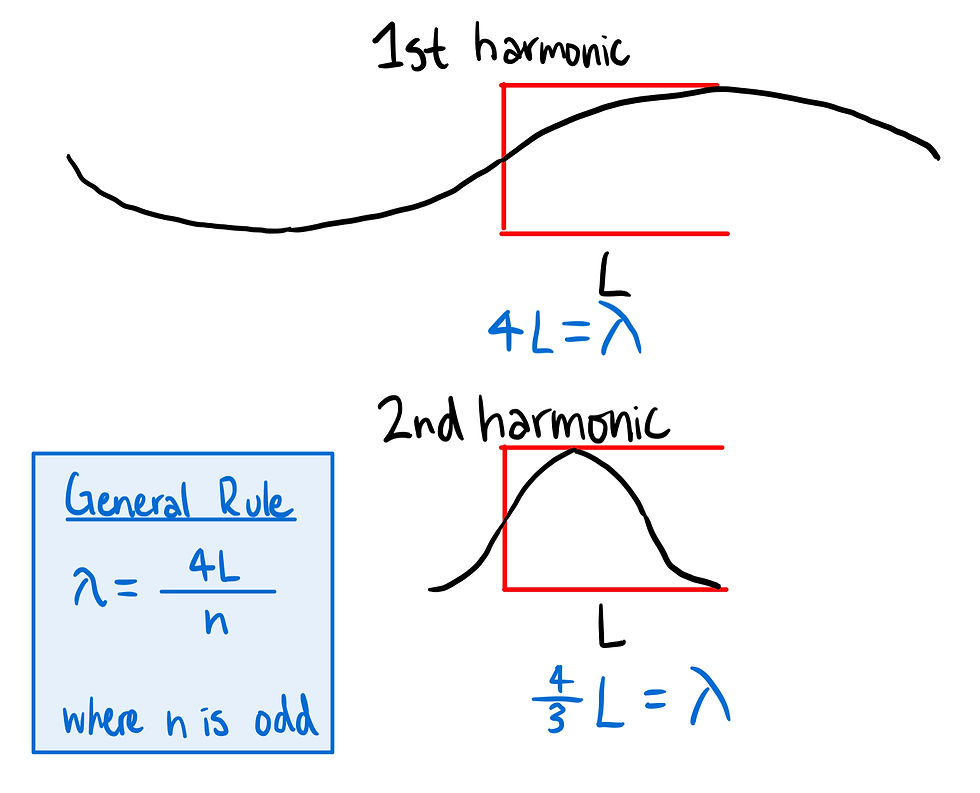

Comments